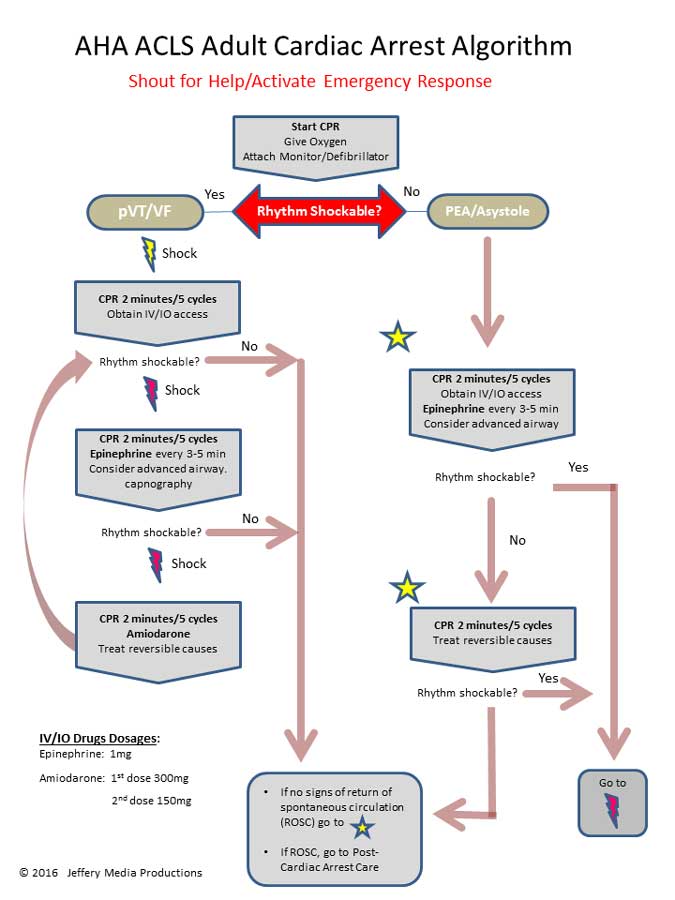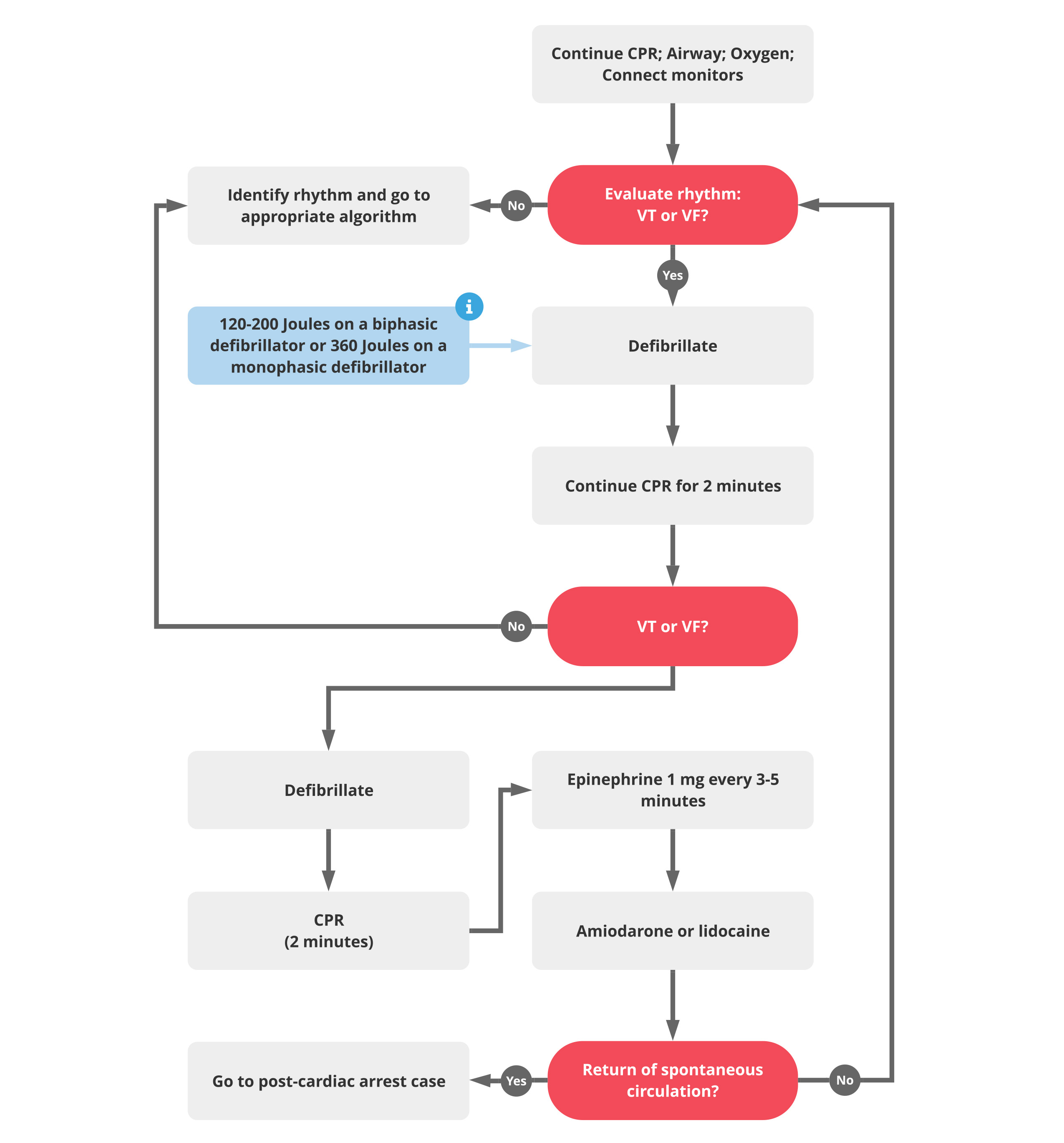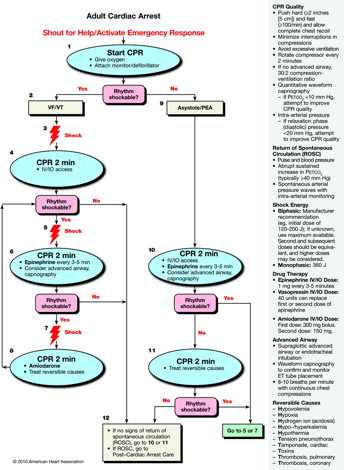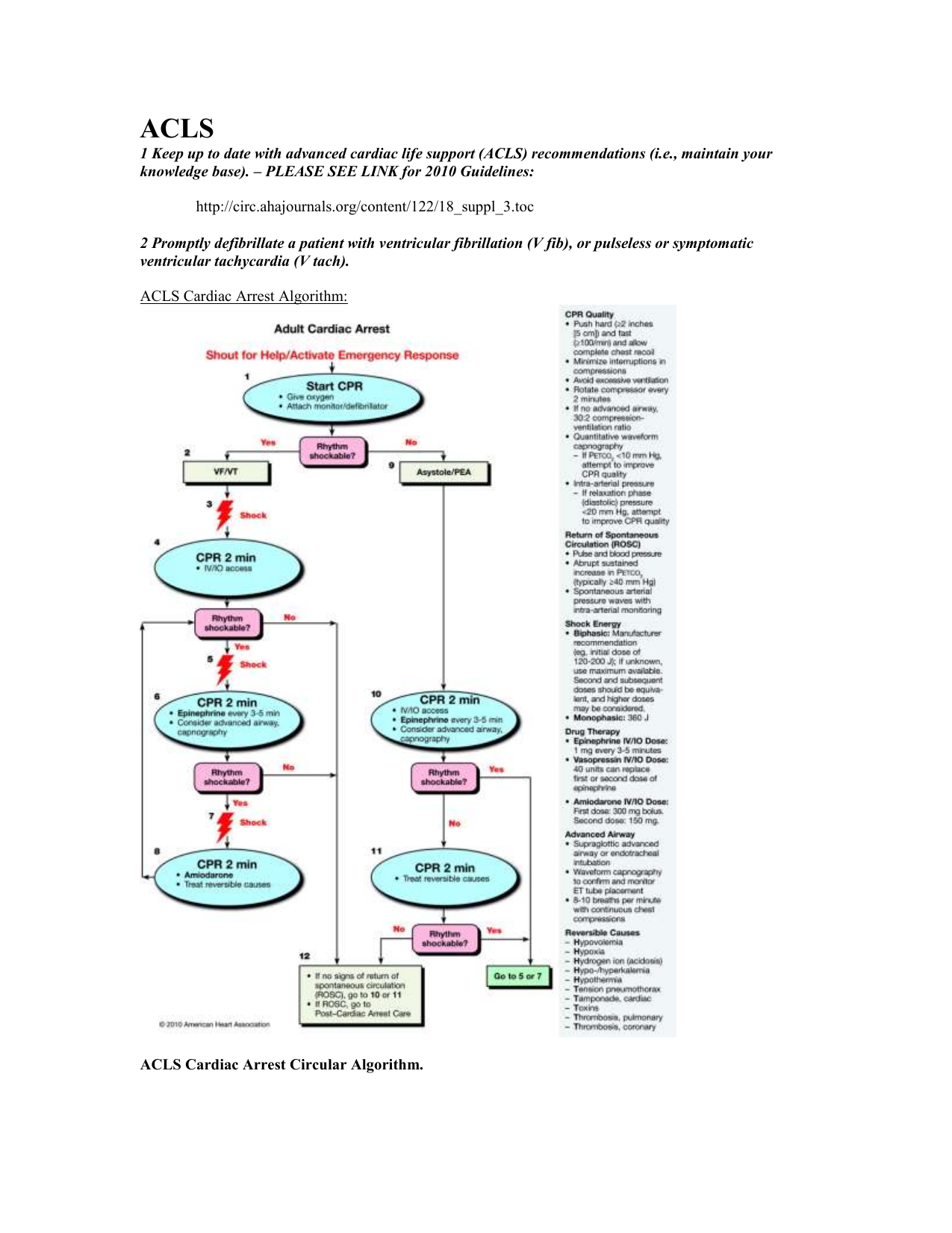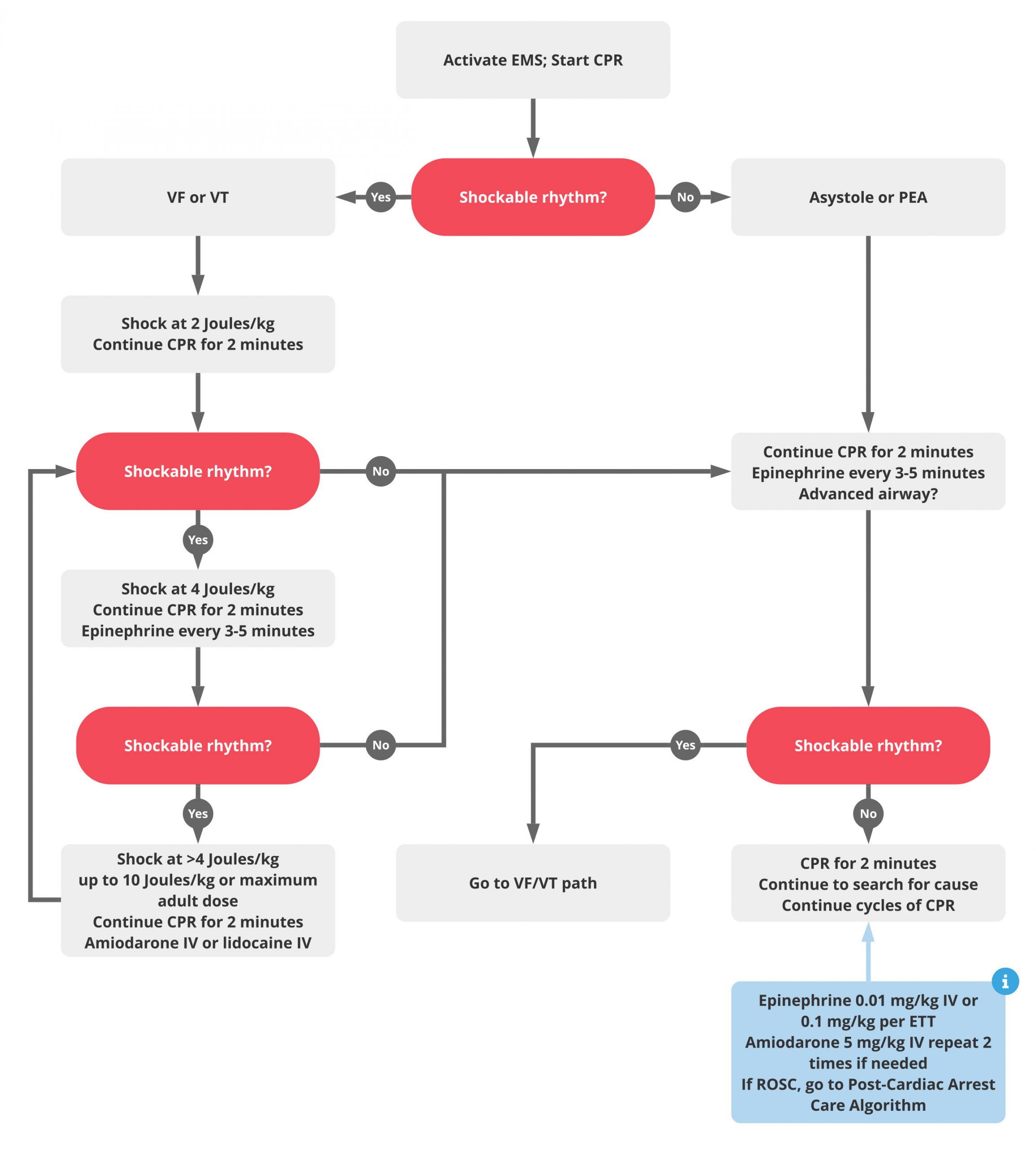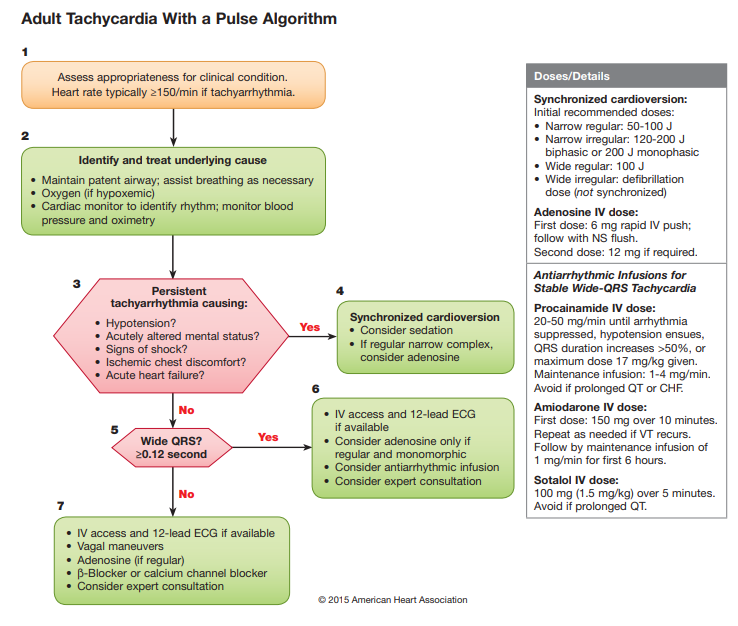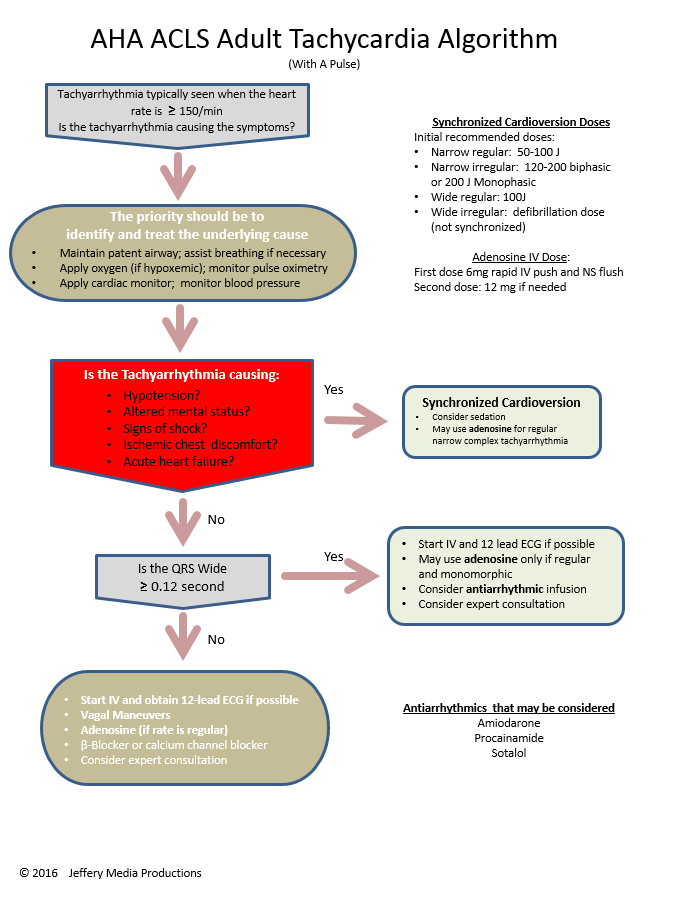V Fib Acls Algorithm
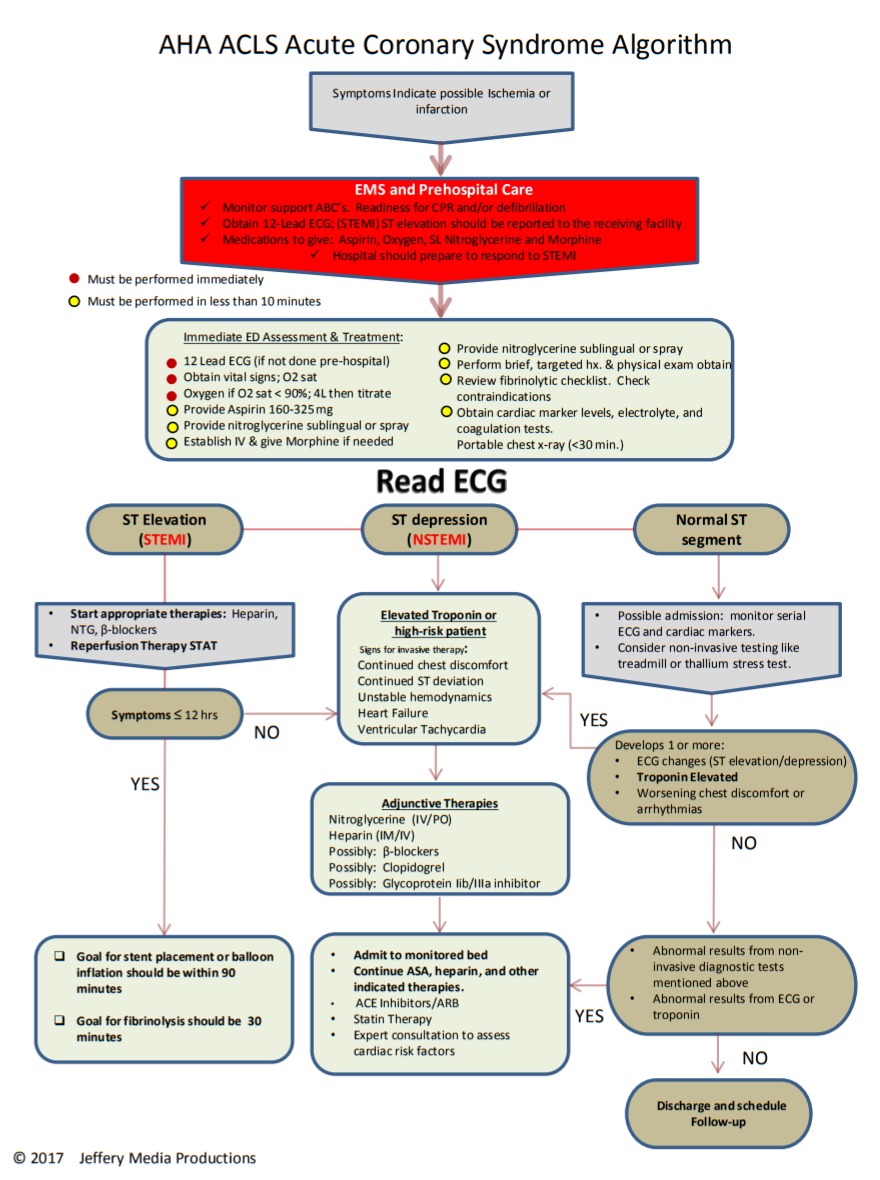
Adult acls cardiac arrest algorithm for ventricular fibrillation.
V fib acls algorithm. Ventricular fibrillation and pulseless ventricular tachycardia are treated using the left branch of the cardiac arrest arrest algorithm. Ensure full chest recoil. Cpr 2 min. Pulseless adult cardiac arrest algorithm.
If the rhythm changes to a v fib or v tach shockable rhythm move to that algorithm and prepare to shock the patient. If the rhythm changes to a v fib or v tach shockable rhythm move to that algorithm and prepare to shock the patient. When you have a patient without a pulse you must recognize either ventricular fibrillation vf or pulseless ventricular tachycardia pvt as shockable rhythms. For acls atrial fibrillation becomes a problem when the fibrillation produces a rapid heart rate which reduces cardiac output and causes symptoms or an unstable condition.
Asystole and pea are also included in the cardiac arrest algorithm but are non shockable rhythms. The acls certification course teaches healthcare professionals advanced interventional protocols and algorithms for the treatment of cardiopulmonary emergencies. Keeping the brain heart and other vital organs perfused is very important in an arrest. When done click again to close the diagram.
Minimize interruptions in chest compressions. Ventricular fibrillation or vf sometimes v fib is a condition where there is uncoordinated contraction of the cardiac muscle of the ventricles in the heart. Ventricular fibrillation falls under the acls adult cardiac arrest algorithm and is the most important algorithm to know for adult resuscitation. When atrial fibrillation occurs with a rvr rapid ventricular rate rate 100 beats min this is called a tachyarrhythmia.
Cpr 2 min. 1 ventricular fibrillation treatment starts with early and effective cpr with the application of oxygen and monitor defibrillator placement. Click below to view the cardiac arrest algorithm diagram. Acls is an acronym that stands for advanced cardiac life support.
If a nonshockable rhythm is still present with no pulse continue with cpr for 2 minutes and treat reversible causes. If the patient shows signs of return of spontaneous circulation or rosc administer post cardiac care. If a nonshockable rhythm is present and there is no pulse continue with cpr. The cardiac arrest algorithm is the most critical algorithm of acls.
